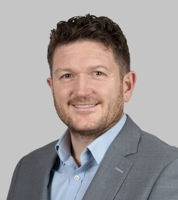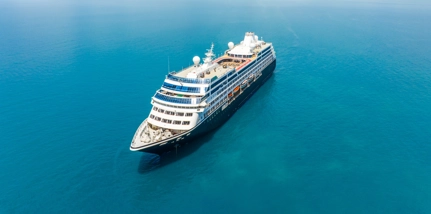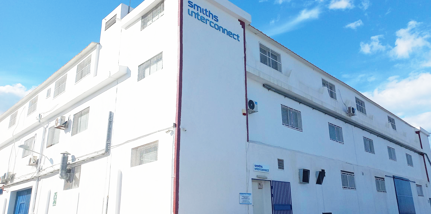18 September 2008
A UNIQUE partnership between Smiths Medical, part of the FTSE 100 technology business Smiths Group, and University College London (UCL) has resulted in the development of a breakthrough clinical device that could transform the lives of patients with COPD across the world. COPD will be the third leading cause of death worldwide by 2030, according to the World Health Organisation (WHO).
The new technology is based on a closed circuit oxygen device invented over 50 years ago by the British rocket scientist Tom Bourdillon, who hoped that it would help take him to the top of the world.
Three days before Edmund Hillary and Tenzing Norgay made the first ascent of Mount Everest in 1953, Bourdillon nearly got there first with the help of his ground-breaking invention. When he and his climbing partner Charles Evans, a British brain surgeon, set out on the first ever summit attempt they were breathing pure oxygen from the device. It helped them climb higher than any man had ever been before and at speeds that have rarely been matched since.
The two men were just 90 metres from the summit when Evans’ device malfunctioned dashing their hopes of becoming the most celebrated mountaineers in the world. Three days later Hillary and Norgay claimed that honour using open circuit oxygen devices.
Bourdillon believed that closed circuit oxygen was more efficient and effective than open circuit because a closed circuit efficiently recycles exhaled oxygen, which would be lost to the atmosphere in an open circuit.
His research was forgotten for 50 years but now Smiths Medical and UCL have developed Bourdillon’s idea into a breakthrough medical device that could help patients with COPD, which is a disease of the lungs in which the airways become narrowed leading to a limitation of the flow of air to and from the lungs, causing shortness of breath.
“We are hoping that this new technology will transform the lives of people living with COPD by allowing them to breathe more easily, exercise and ultimately reduce their dependence on oxygen. It is incredible to think that this breakthrough device is based on a British invention designed to help the first mountaineers reach the top of the world,” said Dr Jeremy Russell, head of research and development at Smiths Medical International.
Bourdillon’s research was rediscovered by Jeremy Windsor and Roger McMorrow, mountaineering scientists at the UCL Centre for Altitude, Space and Extreme Environment Medicine (CASE), who had the idea to redevelop it into a modern breathing circuit for climbers. “Bourdillon recognised that the problem on Everest was low levels of oxygen and if you solved the problem of delivering oxygen you would effectively reduce the height of the mountain to sea level,” said Dr McMorrow. “No-one knows exactly why his device failed but when I tested my prototype on Cho Oyu in the Himalayas 2005 it also failed. In my case the soda lime CO2 absorber malfunctioned and it is possible Bourdillon had the same problem although another theory is that it was a frozen valve. A recently invented CO2 absorber called ExtendAir solved the problem on my circuit.”
Dr McMorrow, when a Smiths Medical Research Fellow at UCL, showed his mountaineering prototype to Dr Russell at Smiths Medical, which has a long-standing partnership with UCL that includes collaboration on research in the field of respiratory medicine. The two scientists quickly realised that the prototype for mountaineers had the potential to evolve into a ground-breaking device for COPD patients as well as for other patients weaning from oxygen in hospital and those on home oxygen. Last year the device was successfully tested on Mount Everest at the Smiths Medical High Altitude Laboratory at Namche Bazaar, Nepal at 3,400m, (11,154 ft) as part of the Caudwell Xtreme Everest Study (CXE), a medical research project conducted by CASE. Smiths Medical is now optimizing and miniaturizing the prototype for patients.
Exercise is important for COPD patients but existing oxygen systems mean it is often not possible. The size of current open circuit systems mean that patients are often confined to their hospital beds or treated at home with large cylinders that severely restrict their mobility. Portable open circuit systems are not able to deliver high enough volumes of oxygen for long enough to permit exercise. In an open circuit system the faster a person breathes the more they dilute the oxygen with ordinary air. This means that if a patient dependent on oxygen starts to exercise their oxygen levels actually drop as their breathing grows faster. Dr Russell added: “The new system is portable and should deliver a very high concentration of oxygen for a sustained period of time. It should help keep oxygen levels constant no matter how fast or slow a patient is breathing.”
Previously, portable closed circuits have been used by Special Forces frogmen (because there are no bubbles), mine rescue workers, firefighters and in bioterrorism suits. George Band, who was the youngest member of the 1953 Everest expedition, said: “I remember how passionate Tom was about his closed circuit device and how disappointed he and Charles were not to make it to the summit. I’m sure Tom would have been really thrilled that his research on the closed-circuit oxygen equipment did not go to waste and could help people suffering from respiratory problems today.”
Professor Monty Mythen, Smiths Medical Professor of Anaesthesia at UCL and Director of Research and Development at UCL Hospitals said: “This project is a fantastic example of the success that comes from scientists in industry working closely with clinicians and university academics for patient benefit. Smiths Medical in collaboration with UCL and NHS Partners makes a formidable team and I am delighted that the Caudwell Xtreme Everest expedition is beginning to reap rewards for patients.”
ENDS
Notes for Editors
COPD
COPD stands for chronic obstructive pulmonary disease. This is a term used for a number of conditions including chronic bronchitis and emphysema. COPD leads to damaged airways in the lungs, causing them to become narrower and making it harder for air to get in and out of the lungs. The word 'chronic' means that the problem is long-term. The WHO predicts it will be the third leading cause of death worldwide by 2030.
Smiths Medical Smiths Medical is a leading supplier of high-quality medical devices and products for global markets. It designs and manufactures specialist medical devices in three key areas: Safety Devices, Vital Care and Medication Delivery. Smiths Medical's customers include hospitals, alternate care such as home care, and other healthcare providers worldwide. Smiths Medical is part of the global technology business Smiths Group, a world leader in the practical application of advanced technologies. Smiths is a global technology company listed on the London Stock Exchange. For further information, visit www.smiths-medical.com
Caudwell Xtreme Everest is a research project coordinated by the UCL Centre for Altitude, Space and Extreme (CASE) environment medicine - doctors and scientists studying human systems stretched to breaking point in extreme environments to increase our understanding of critically ill patients. The goal is to place a research team on the summit of Mount Everest in 2007 and make the first ever measurement of the level of oxygen in human blood at this altitude. This is the centrepiece of an extensive programme of research into hypoxia (low oxygen levels) and human performance at extreme altitude aimed at improving the care of the critically ill and other patients where hypoxia is a fundamental problem. The Caudwell Xtreme Everest expedition is being sponsored by John Caudwell, a businessman and founder of The Caudwell Charity. Scientific studies in the run-up to the expedition have been supported by a research grant from medical gases specialist BOC Medical. www.caudwell-xtreme-everest.co.uk
Media
Laura Peek
+44 (0)7970 176 314
General media enquiries
Contact our global media and communications team at:

Please note – the press team can only answer enquiries from accredited members of the press.
Related articles

Smiths Detection secures deal to supply systems to major cruise lines
Find out more

Smiths Interconnect expands EMEA cable harness production capacity
Smiths Interconnect, announces the expansion of its cable harness production capacity at its facility in Tunisia, an investment for growth in support of all its EMEA production sites.
Find out more

Smiths Detection accelerates AI security offering with BigBear.ai collaboration
Read our company news as Smiths Detection accelerates its AI security offering with BigBear.ai
Find out more

